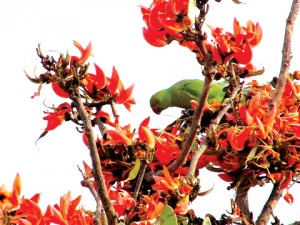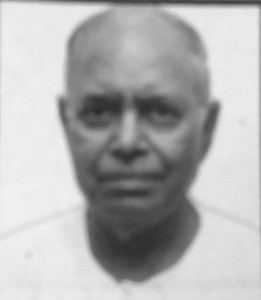Registered with the Registrar of Newspapers for India under R.N.I 53640/91
Vol. XXVI No. 05, June 16-30, 2016
Archives: Vol. XXVI No. 05, June 16-30, 2016
Will Chennai adopt Delhi’s ideas?
(by A Special Correspondent)
It had to happen – one of the Indian metros would have had to take a tough stance eventually and that now happens to be Delhi. Faced with an alarming problem of traffic congestion and uncontrolled pollution thanks to emissions, a high-powered committee has made a set of recommendations that flies in the face of what has been transport and housing policy thus far all over the country. The Delhi initiative has much that Chennai can learn from. The question is, will the local policymakers pay heed?
The steps proposed will mean a complete transformation in thinking and action. The panel has mooted a complete ban on construction of flyovers and underpasses unless necessitated by natural barriers such as rivers and hills. Stating that such structures have come about solely because of automobile-centric planning, it states that these promote the use of private vehicles, which ultimately proves detrimental to the city. The study has highlighted that 60 per cent road trips are for distances below four kilometres and 80 per cent below six. It has therefore called for the encouraging of pedestrian paths and cycling routes, with crossings every 250 metres and the banning of all signal-free automobile corridors as these encourage over-speeding and therefore accidents.
The committee has also come down heavily on parking of vehicles on sidewalks, stating that this ought to be made a penal offence with heavy fines. It calls for the implementation of a congestion tax, following the London model and also a steep increase in parking fees. Recognising that two-wheelers have proliferated chiefly because there is no viable public transport alternative, it has demanded heavy investment in the development of bus rapid transport systems (BRTS) where the per km cost will be less than that of riding a two-wheeler. The panel has identified five BRTS routes into Delhi that, it says, if implemented will result in 80 per cent of the population taking to public transport.
But perhaps the most startling recommendation, and one that is likely to result in protests, especially from the builder lobby, is that gated communities ought to be discouraged.
Plans to revive garbage segregation concept
By A Staff Reporter
 It’s that time of the year when the Flame of the Forest is ablaze – (Photograph by Octavious Bunshaw).
It’s that time of the year when the Flame of the Forest is ablaze – (Photograph by Octavious Bunshaw).
With our Corporation likely to go to the polls in the next six months, the present administration is suddenly moving into overdrive as far as several long pending initiatives are concerned. The fact that the elections to the State Legislature saw several seats in the city going to the Opposition may also be a reason for this urgency. One of the ideas now being given an airing is the plan to get our citizens to sort their garbage at source. This is not a new development and it must be said that in all its previous outings it failed, chiefly because there was no proper implementation. This time, however, it may succeed.
Culture Scaping
Bama Ranganathan

Prof. Swaminathan wants to create a culture atlas of Tamil Nadu even as he sensitises the youth to India’s heritage.
Professor Swaminathan is a story-teller of our ancient history. He is best known for what he calls ‘culture-scaping’. He is equally well known for documenting Pallava Art in Mamallapuram.
Swaminathan, after professionally qualifying in mechanical engineering, taught at IIT, Delhi, for more than 30 years.
The sarees of the Gods
by Sabitha Radhakrishna

A footnote to our series on Kanchipuram is this story on
Conjeevaram, as the British called the city now Kanchi puram, nestles on the banks of the River Vegavathi, 100 km from Chennai. It is called Silk City, being famous for the Kanchipuram pattu (silk) sarees. It is also called the city of a thousand temples and considered sacred by Buddhists, Jains and Hindus (as seen in these columns over the past three issues).
The move to Vandalur
by Shobha Menon
In 1972-73, the Government of Tamil Nadu took up the question of shifting the Zoo to a more suitable and congenial place. Lack of space and increasing pollution through the industrial and commercial developments in the vicinity of the Corporation Zoo Complex – Madras Central Station and Madras Harbour on the eastern side, Ennore Thermal Power station and Binny Textiles and various engineering industries on the northern side, were cited as the main reasons. Locations considered included Guindy Park Reserve Forest, Pallikaranai Lake, and Nanmangalam and Vandalur Reserve Forest.

